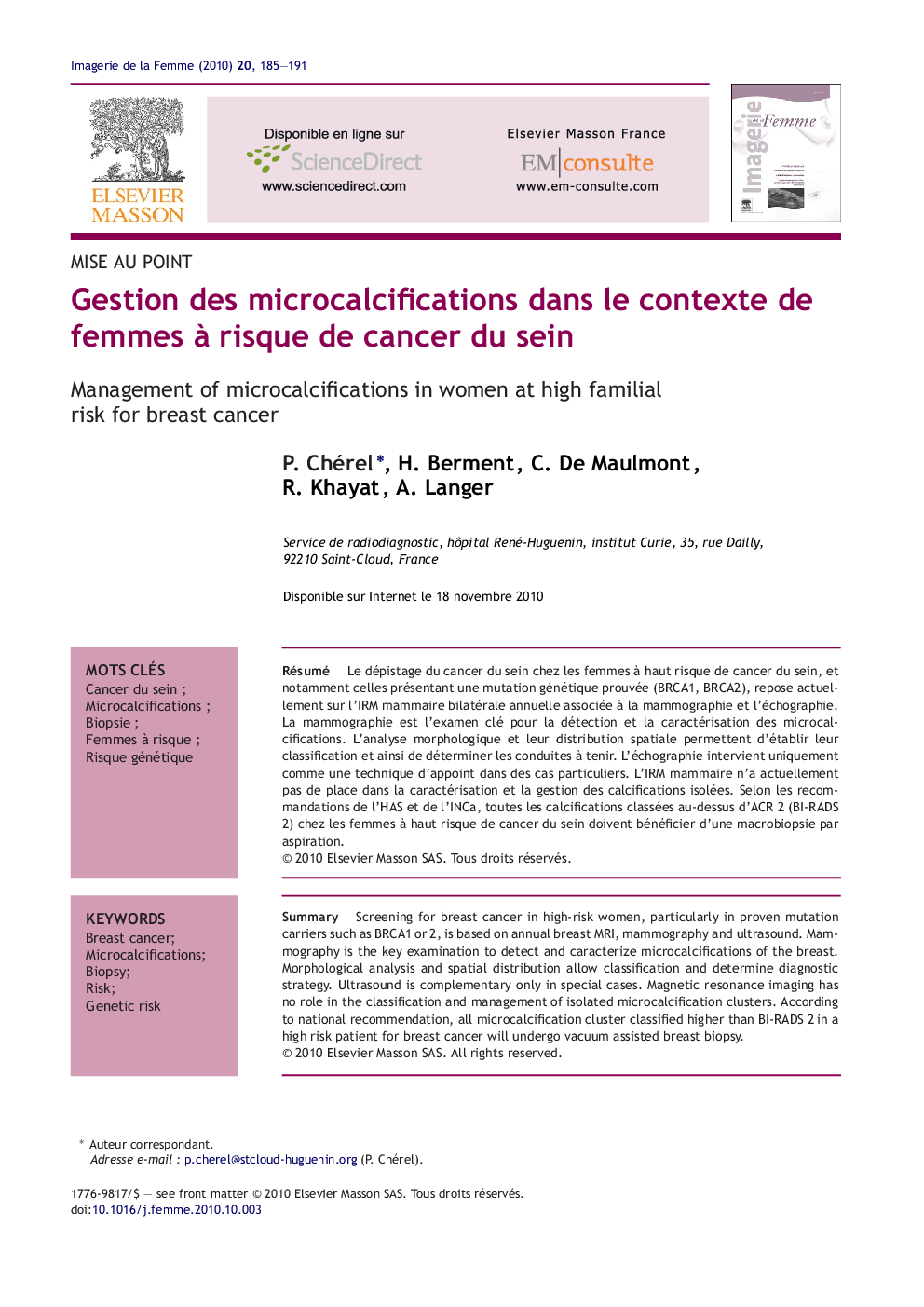| Article ID | Journal | Published Year | Pages | File Type |
|---|---|---|---|---|
| 2726095 | Imagerie de la Femme | 2010 | 7 Pages |
Abstract
Screening for breast cancer in high-risk women, particularly in proven mutation carriers such as BRCA1Â or 2, is based on annual breast MRI, mammography and ultrasound. Mammography is the key examination to detect and caracterize microcalcifications of the breast. Morphological analysis and spatial distribution allow classification and determine diagnostic strategy. Ultrasound is complementary only in special cases. Magnetic resonance imaging has no role in the classification and management of isolated microcalcification clusters. According to national recommendation, all microcalcification cluster classified higher than BI-RADS 2Â in a high risk patient for breast cancer will undergo vacuum assisted breast biopsy.
Related Topics
Health Sciences
Medicine and Dentistry
Health Informatics
Authors
P. Chérel, H. Berment, C. De Maulmont, R. Khayat, A. Langer,
